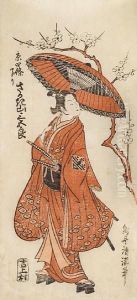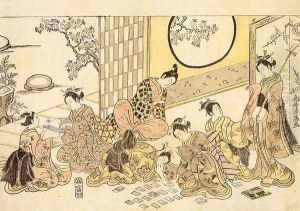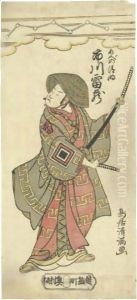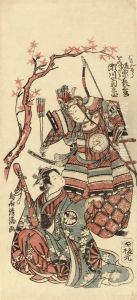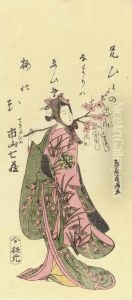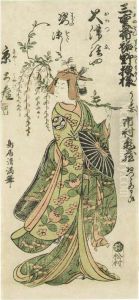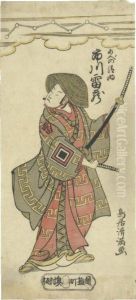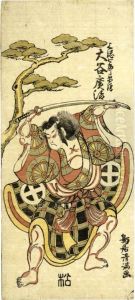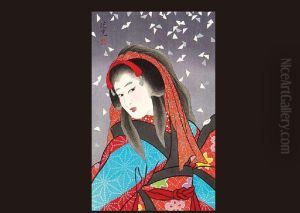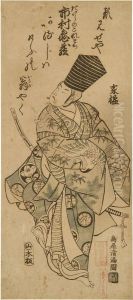Torii Kiyomitsu Paintings
Torii Kiyomitsu was a prominent Japanese ukiyo-e artist, known for his significant contributions to the Torii school of Japanese woodblock printing. Born in 1735, Kiyomitsu emerged as a leading figure in the world of ukiyo-e during the middle of the Edo period, a time when the cultural and artistic life of Japan was flourishing under the Tokugawa shogunate.
Kiyomitsu was the grandson of Torii Kiyomasu II, and he succeeded his father, Torii Kiyomitsu I, as the head of the Torii school. This school was renowned for its vibrant theatrical prints, particularly those depicting Kabuki actors and scenes. These works were characterized by their dynamic compositions, bold use of color, and the expressive portrayal of figures, which captured the vitality and spirit of Kabuki theater.
During his career, Torii Kiyomitsu refined the color woodblock printing technique, known as nishiki-e, which allowed for the production of prints with a wide range of colors and intricate details. This innovation marked a significant advancement in the art of ukiyo-e and contributed to its popularity throughout Japan. Kiyomitsu’s mastery of this technique is evident in his prints, which often featured rich, saturated colors and elaborate patterns.
Kiyomitsu's work played a crucial role in the development of the full-color print (nishiki-e) in the 1760s, which revolutionized the ukiyo-e genre and laid the groundwork for future artists like Suzuki Harunobu and Kitagawa Utamaro. His contributions to the Torii school and the wider ukiyo-e movement have cemented his legacy as one of the era's most influential artists.
Despite his success, details about Kiyomitsu’s personal life remain scarce, as is common with many artists of the period. After his death in 1785, the Torii school continued to influence Japanese art, maintaining its prominence in the production of theatrical prints. Today, Torii Kiyomitsu's works are celebrated for their historical significance and artistic merit, offering insights into the cultural and social dynamics of Edo-period Japan.
![The Actors Onoe Kikugoro As Goinosuke Takenari And Nakamura Kiyosaburo As Keisei Takasago In The Play Keisei Asakusa No Kane [the Belle Of Asakusa] Performed At The Ichimura Theatre In November 1754, Signed Torii Kiyomitsu Hitsu](https://www.niceartgallery.com/imgs/722613/s/torii-kiyomitsu-the-actors-onoe-kikugoro-as-goinosuke-takenari-and-nakamura-kiyosaburo-as-keisei-takasago-in-the-play-keisei-asakusa-no-kane-the-belle-of-asakusa-performed-at-the-ichimura-theatre-in-november-1754-signed-torii-kiyomitsu-hitsu-7a577a70.jpg)
